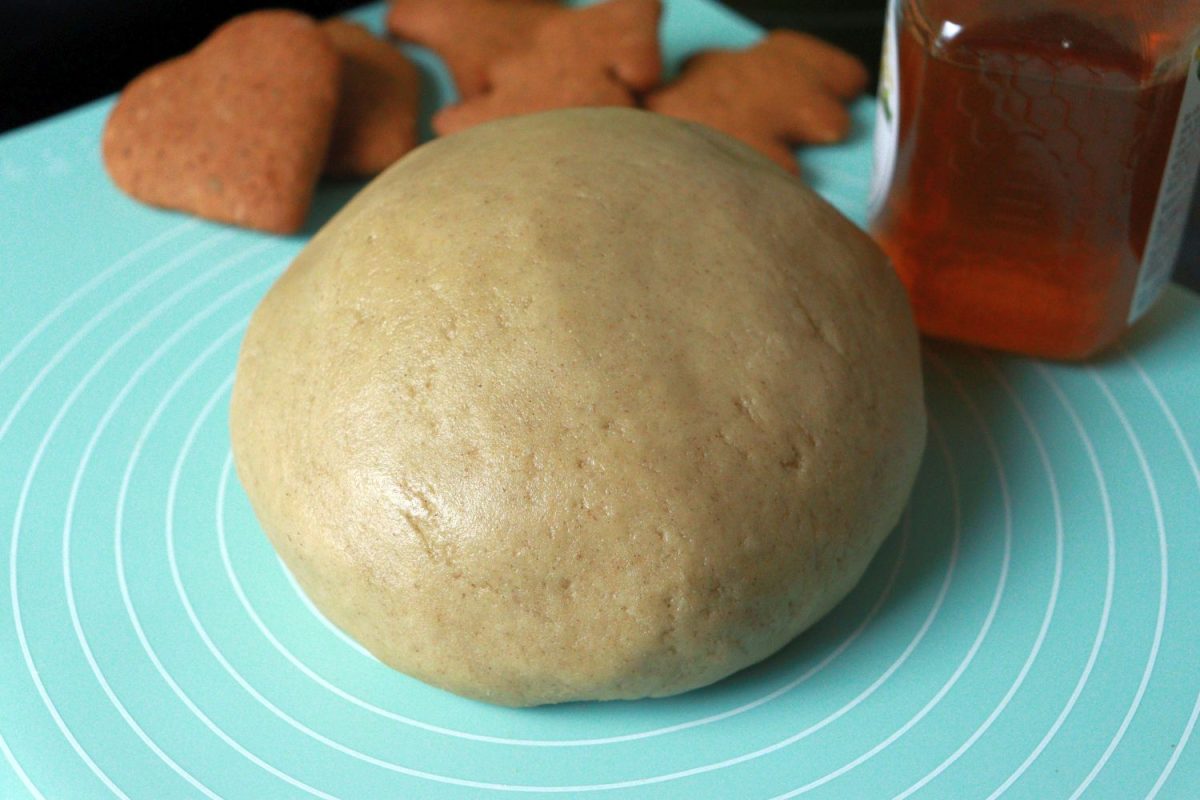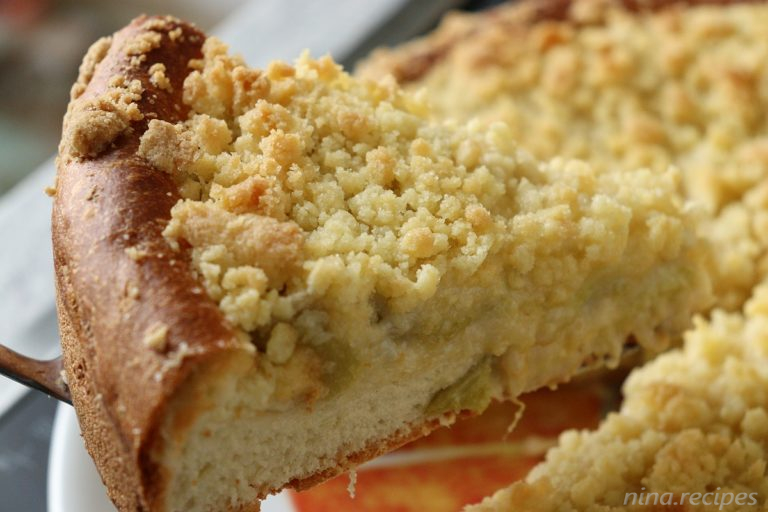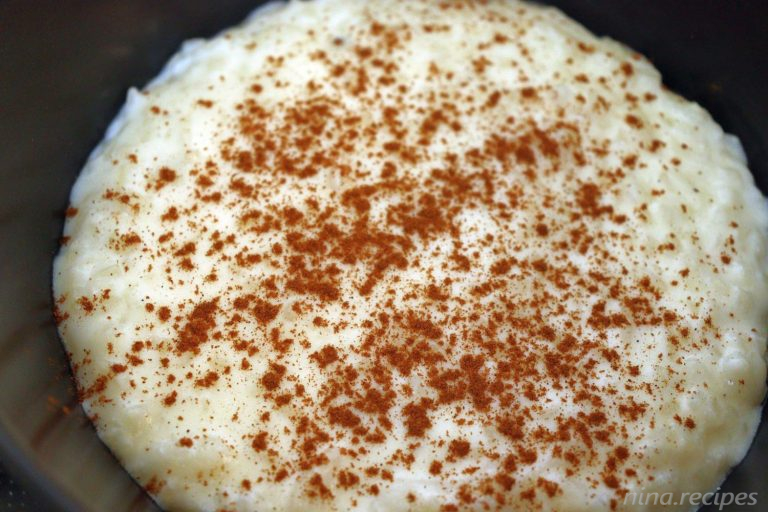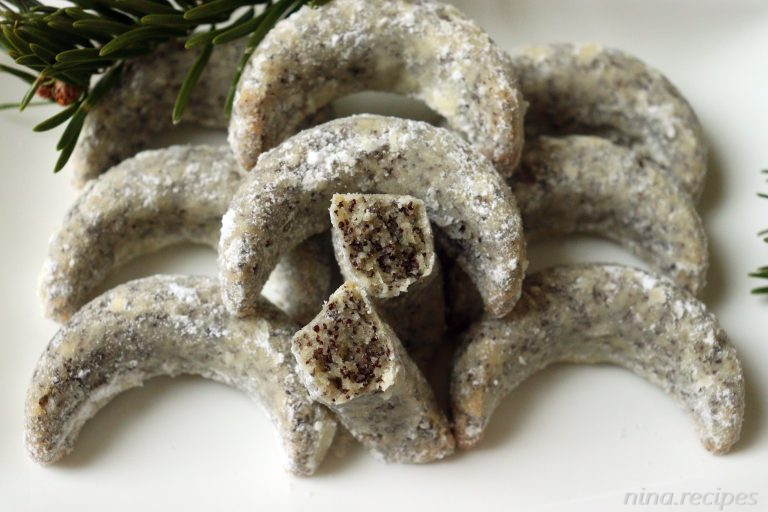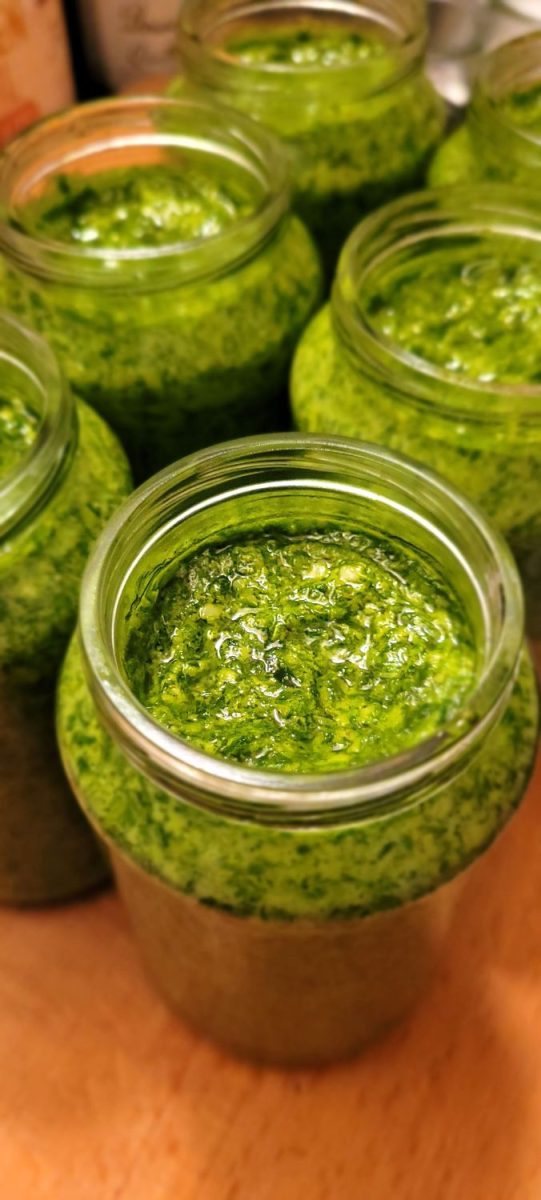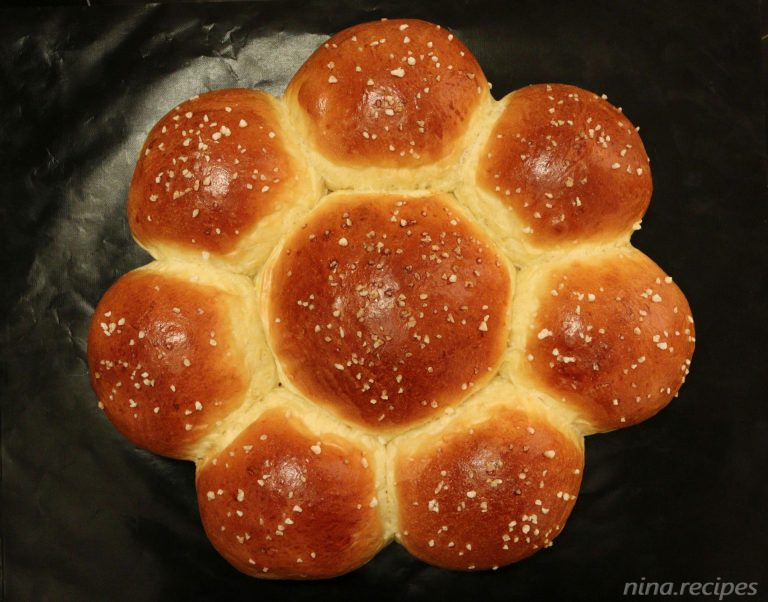Honiglebkuchen – German Honey Gingerbread Cake
Honiglebkuchen (German Gingerbread Honey Cake), also called Honigkuchen is a type of Lebkuchen (Gingerbread) where, at least half of the sweetener, is honey.
This type of dough can be used as a basis to make classical Lebkuchen or other traditional Christmas gingerbread type of sweets like: Domino Steine (lit. Domino Rocks: a layered German Christmas Cookie made of one layer of Lebkuchen, one layer of jelly, one layer of marzipan and covered in dark chocolate), Basler Leckerli (flat Lebkuchen, with nuts and candied fruits pieces, covered with a sugar glaze), St. Gallener Biberle (small Lebkuchen pieces, filled with marzipan), Printen (small Lebkuchen pieces with candied sugar, often covered in dark chocolate), Spitzkuchen (a type of Lebkuchen which contains raisins, nuts and candied pieces).
The biggest advantage of making a basic Honiglebkuchen dough is that you can prepare it months in advance and then use it as needed for anything you want. This dough can be stored up to 4 months in a cool room or fridge.
Basic Honiglebkuchen recipe: Flour = Honey or Honey+Sugar+Water
Ingredients for a basic Honiglebkuchen dough (about 1000 g):
- 375 g high gluten flour (Type 1050 in Germany), you can also use all-purpose or bread flour
- 125 g rye flour (Type 1150 in Germany), can be replaced with all-purpose or bread flour
- 500 g honey (or 250 g honey, 200 g brown sugar, 50 g water)
- Heat the honey so the sugar crystals dissolve. If you have a thermometer, it should reach 70°C. Do not overheat it since starting at 80°C, it loses its aroma. If you don’t have a thermometer, you should look at the consistency and when it’s fluid and easily fall off the spoon, it should be done. I use forest honey since it has a darker color and more flavor.
- If you also use sugar, first boil up the sugar and water and then add the honey.
- Let the honey cool down till hand temperature (about 35°C).
- Add the flour to the honey and mix it till everything is incorporated. I like using a wooden spoon for mixing. The dough will be quite sticky and soft.
- Can you shortcut? Yes! You can just heat the honey till it’s fluid and then add it to the flour. Heat it directly in the recipient used for mixing so you don’t waste any honey. Or do it like me: I boil water, fill a pan, and then put the closed honey jar in it and let it sit for a few minutes. The honey is then fluid and ready to be mixed with the flour. You can also use the microwave, though you don’t have so much control over the temperature. The dough will have a slightly more sandy composition but otherwise should be fine. The purpose of this “shortcut” is to make an acceptable dough faster, without a thermometer. Of course, the best results will be obtained by sticking to the recipe.
- Rye flour will give a slightly bitter taste and a brown color, thus a better flavor. The proportion is 3 parts all-purpose/bread flour to 1 part rye flour. You can, however, replace it with all-purpose/bread flour if you can’t tolerate it.
- Let the dough rest in the fridge for a minimum of 1 day or up to 3 days. At this point, you can also store it for a longer time. Make sure it is properly wrapped in a thick kitchen foil and covered with cotton towels. Do not use aluminum foil because it will stick to the dough and it will be very hard to remove.
- Before using the dough, you should take it out of the fridge a couple of hours before so it reaches room temperature and it’s easier to work with.
- Your dough is ready to be made into a basic Lebkuchen.


